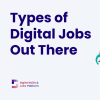New McKinsey & Co report sheds light into willingness to change jobs and upskill
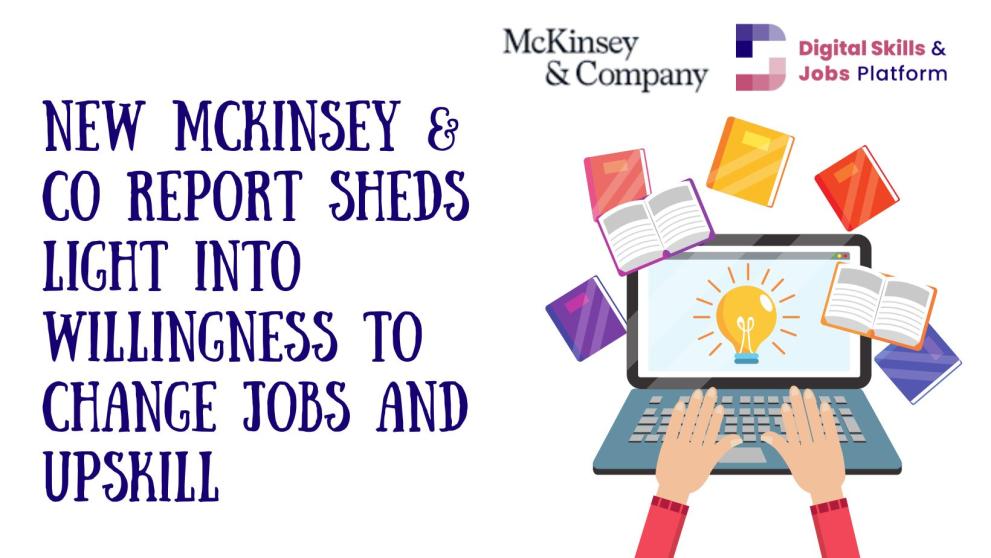
How do people go about to acquire new skills? Do they seek this out actively and how does this look in practice? What are the main challenges they face? A new report by McKinsey & Company, "The upskilling imperative: Required at scale for the future of work", dives into this dimension.
Although McKinsey's report focuses primarily on Americans' attitudes to job transition and upskilling, some insights can shed light on the digital transformation in Europe too. After all, challenges in digital and employment rarely exist in isolation, albeit differences from one state to the next, or one country to the next, remain.
Between 2016 and 2019, American occupations changed almost 3 times as often as Europeans. We note an increase on home turf, in Denmark with regards to this too: in 2023, 21% of Danes considered changing jobs, in 2024 the figure was 33%, according to a recent PwC report.
"In the wind of change": shifting work dimensions
From 2020 to 2024, 34% of 9,446 respondents to the McKinsey report had changed jobs. Close to one quarter (23%) moved to another company, 17% changed occupations, and another 13% moved to an entirely different industry sector. In total, almost half of respondents (44%) were willing to change jobs - a high number (although not as high as back in 2021 during the coronavirus pandemic in Europe, when this number stood at almost 50%). See the figure below for a visual representation of this.
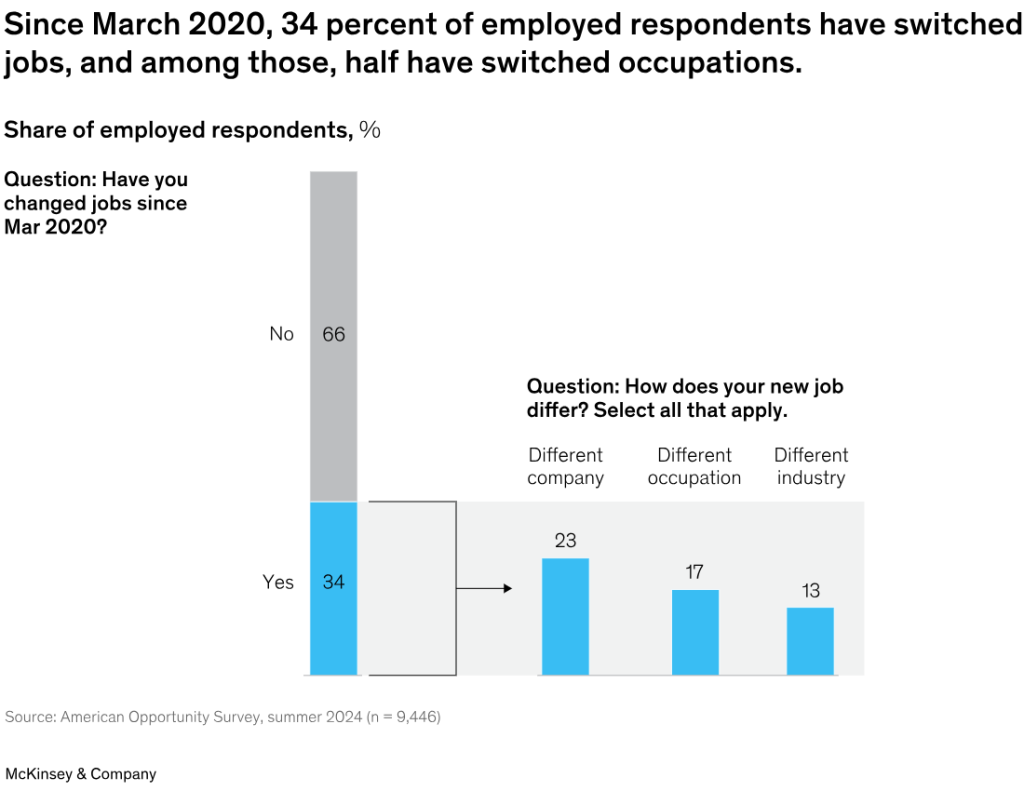
Who are the job seekers?
The younger the worker, the more willing - and likely - they are to change jobs. A large part of this can be attributed to the fact that younger people are typically less settled compared to their older counterparts, and this affects decision-making. However, one can also speculate that the young people may also simply be more willing to change jobs, as it is predicted that the workers of the future (the young people) will change jobs several times throughout their careers than what has been the case so far.
Those who see the glass as half empty may see young people as more unreliable workers. Those who see the glass as half full will, however, see that the same group also wants to improve and acquire new skills. If you belong to the latter, you can look forward to a future with a flexible workforce with a larger set of skills.
Skills, skills, skills: how do we get to them?
Of those surveyed who have responded that they are interested or actively seeking to improve their skills, 41% go to education institutions, 35% to private companies and 23% to NGOs to gain new skills and/or gain insight into what job opportunities they have.
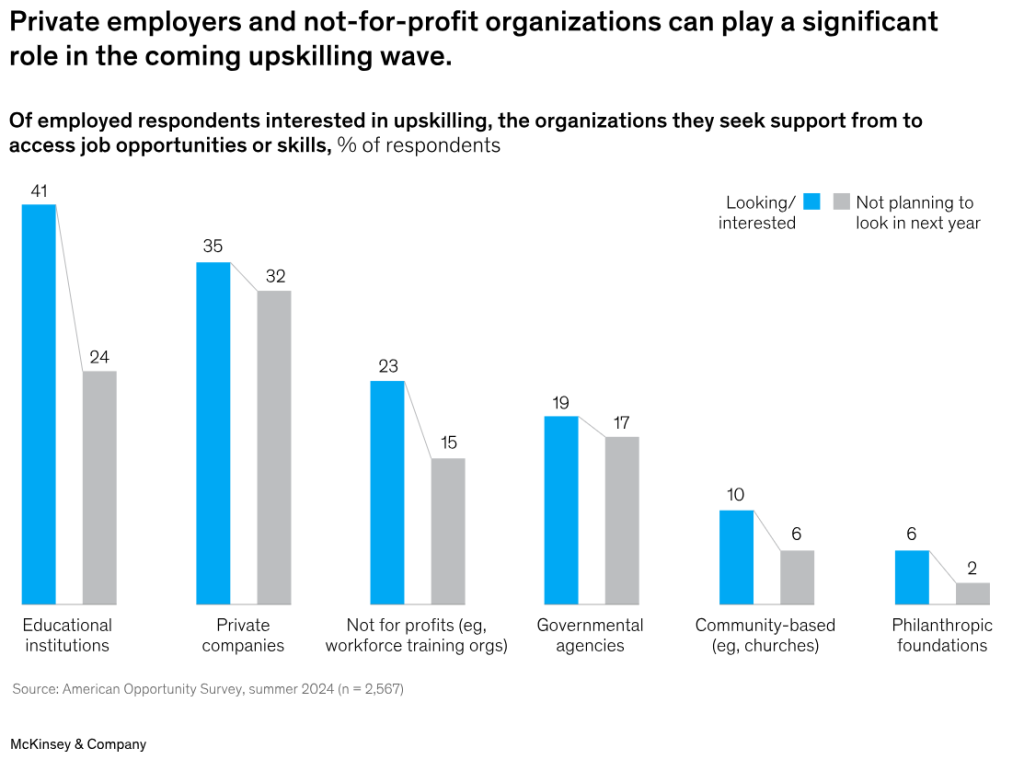
McKinsey recommends employers to help their employees improve their skills, as improving skills not only helps the individual, but also the company. Many workers report, however, that lack of time keeps them from developing their skills - here the employer, in cooperation with the worker, can find schema solutions that release time for upskilling.
Furthermore, it is recommended that NGOs and companies can work more closely together in the goal of providing employees with tailor-made learning courses that benefit all parties.
What's stopping you again? Top barriers to skills acquisition
Lack of time is generally identified as the main obstacle to improving skills. Approximately 45% of those who want to develop their skills experience a lack of time as a challenge; In the 35-64 age group, just over 50% lack time.
In the 18-34 age group, however, lack of money is increasingly identified as the main obstacle to upskilling. Here, however, it is again important to note that the self-paid universities of the United States pose different problems than those found in Europe. See the graph below to visualise the top barriers to skills acquisition in the US.
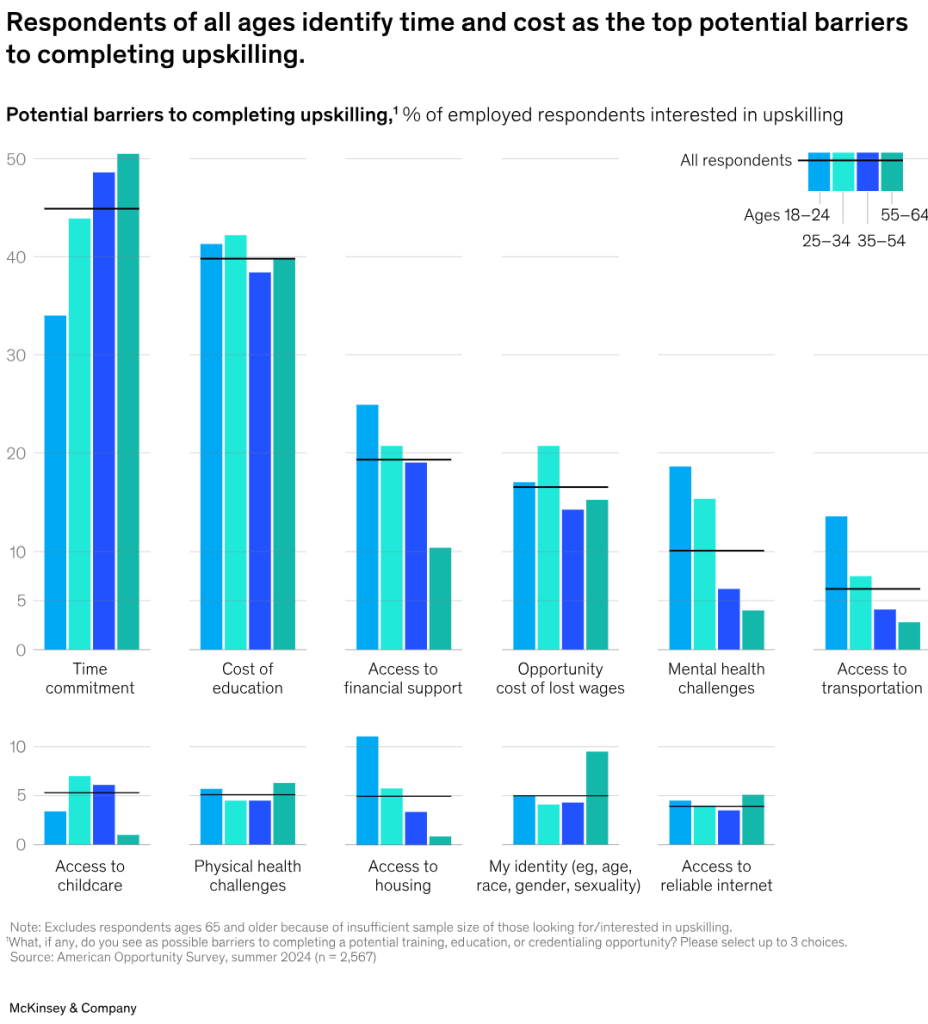
At the same, the figures above bear resemblance to the experience of Europeans too. Time and financial constraints are the two main barriers in the EU that stop people from participating in training: on average, 40.7% of adults surveyed in the 2023 EU Adult Education Survey say that their schedules prevent them from participating.
Further reading
Jump to the full report on McKinsey's website and check out its insights for more information.





